Global Research
War and the Conquest of Eurasia: Iran’s "Green Wave" Opposition and its Ties to Global Geopolitics
by Mahdi Darius Nazemroaya
Oct. 25, 2010
The Russian and Chinese need for a strategic Iranian partner is a component of any defensive strategy or viable alternative against American and European Union encroachment into their geopolitical spheres of interest.
In 2009, the Russian and Chinese need for having a government in power in Tehran that would be allied to them became apparent during the 2009 period of post-election restlessness in Iran. Moscow, Beijing, and many other capitals worldwide all kept close eyes on Iran when riots and protests spilled into Iranian streets.
The “Green Wave” or Green Revolution pertains to the riots by a segment of the opposition after Iran’s 2009 presidential elections. The movement gets its name from the colour of the Iranian flag that presidential candidate Mir-Hussein Mousavi selected. This event could have become a geo-political coup against the political entity of Eurasia. It very well could have become a bona fide geo-political threat to the interests of Russia and China. Inversely, the Green Wave was welcomed by America, Britain, France, Germany, Israel and their allies.
In order to understand the Sino-Russian need for Iran, the geo-political dimensions of the Green Wave need to be discussed, as well as how these factors are linked to Iran as a geo-strategic pivot and its policy options as a political player on the international stage. A related dimension is the cohesive development of a unified order in Eurasia that the U.S. and its allies are trying to halt. Iran is crucial in the process of Eurasian cohesion which involves a core triple alliance consisting of the Russian Federation, the People’s Republic of China, and Iran.
The Green Wave and the political riots that broke out in Iran emerged for a large number of inter-linked reasons. There were different motivations amongst its members and organizers. There are different explanations and perspectives on the causes and motivations of the Green Wave. All these factors are part of a broader understanding of the relationship between internal Iranian politics and global geo-politics.
Amid the descriptions of the Green Wave as a democratic struggle or a fight for greater civil liberties, however, is the fact that it reflects an element of in-fighting amongst the Iranian elites. This point is crucial. For all intents and purposes, this key feature of the Green Wave is what must be kept in mind when discussing it at the geo-political level.
Utilitarian Geo-Strategy and the War Preparations of Eurasia
It is easy to overlook the impact of geographic factors in historical, political, social, and economic development.
Most scholars and analysts correctly try to avoid the simplistic fallacies of geographical determinism. Yet, the role of geography should not be overlooked in the course of human development. For example, energy production is tied to the physical reality of a land and in the past a people living on a coastline would be oriented towards the sea and fishing in most, if not all, aspects of their collective lives, from the economic to the socio-cultural. By the same token human actions should not be attributed to geography alone. Human agency has always had a role to play in the developmental path of humans and their societies.
In regards to the matters at hand, they are inescapably tied to a geographic reality that is too strong to be ignored. The drive to control Eurasia by the Periphery is part of this. This drive, which has been pushing inwards towards the Eurasian Heartland, has been framed in many different ways throughout modern history. The Periphery is a conceptual term applied to the U.S., Britain, the E.U., Japan, Australia, and their allies, which are essentially states outside of Eurasia or on its outskirts.
A new term must also be applied at this point: utilitarian geo-strategy. Utilitarian geo-strategy, a term coined herein, is the application or projection of utilitarianism or utilitarian values to geo-politics. The term is new, but this mode of thinking is not. This term captures both the spirit and the basis of modern geo-strategy and gives it a tangible form. Today it is utilitarian geo-strategy, with its materialist basis, that is the dogma behind the march to war in the Middle East and the rest of Eurasia.
Halford J. Mackinder also understood this reality in terms of what he called strategic geography. Mackinder stated that every organized state, which he called a civilized nation, was related to the physical land that it occupied in two ways: “Whatever the exchanges effected by trading, [a country] is (I) ultimately dependent upon the past and present [products] of its own territory, and (2) [a country] must be prepared to defend that territory against the intrusion of covetous neighbours.”[1] It is precisely in preparation for these phenomena that Eurasia’s countries are preparing themselves for; they are preparing to defend their territories against intrusion in all its forms, ranging military occupation to economic colonization.
READ MORE
Subscribe to:
Post Comments (Atom)


![[URGENT PLEA: In Update] EMERGENCY in GANGJEONG Since AUG. 24, 2011](http://2.bp.blogspot.com/-3iz8k-USXVY/TlmRYhhIYtI/AAAAAAAAL2c/9dbF85ZIkIs/s227/jejusit.jpg)
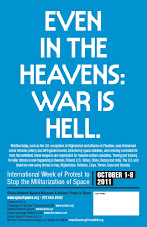
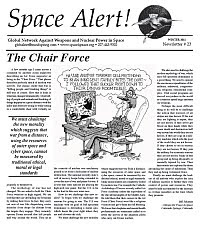

![[Solidarity from Japan for the Jeju] 253 individuals and 16 groups/organizations](http://2.bp.blogspot.com/_gnM5QlRx-4c/TR_YeNVE1yI/AAAAAAAAHWQ/ARyf6oQN0S0/S227/jeju_12_10j.jpg)
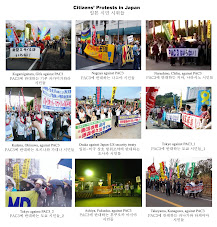
![[Translation] Korean organizations' statement: Immediately cancel the joint ROK-US drill Nov 26](http://2.bp.blogspot.com/_gnM5QlRx-4c/TPOE8VKXHFI/AAAAAAAAGlM/8lryt-8sFjc/S227/1.jpg)
![HOT! [Hankyoreh Hani TV] Beneath the Surface: the investigation into the sinking of the Cheonan](http://4.bp.blogspot.com/_gnM5QlRx-4c/TOI83qht8aI/AAAAAAAAGXU/22SW6Q5ntV8/S227/HaniTV%2BCheonan.gif)

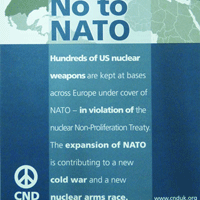

![[Translation]Statement against illegal inspection and unjust lay-off by the Kunsan USAFK!(Nov_2010)](http://4.bp.blogspot.com/_gnM5QlRx-4c/TOPLsVkZMqI/AAAAAAAAGZs/3YnnckIyAaY/S227/gunsan%2Bprotest.gif)
![[Translation] Korean organizations' statement against dispatching special force to the UAE on Nov.](http://4.bp.blogspot.com/_gnM5QlRx-4c/TOP95zHXlCI/AAAAAAAAGak/E0Ug1XtUFfM/S227/antiwarpeace.jpg)
![[Translation] Stop, Joining MD!: South Korean activists' statement and writing on Oct. 25, 2010](http://3.bp.blogspot.com/_gnM5QlRx-4c/TOP7Es4_2sI/AAAAAAAAGac/eWVMPD-U4p0/S227/StopMD.jpg)
![[In Update] People First, NO G-20 (Nov. 6 to 12, Korea)](http://2.bp.blogspot.com/_gnM5QlRx-4c/TJd53XBzHlI/AAAAAAAAFQo/ldO9JPE3eqo/S227/left21_G20.jpg)
![[International Petition] Stop US helipad plan in Okinawa to save great nature](http://4.bp.blogspot.com/_gnM5QlRx-4c/TKC2AHRNzBI/AAAAAAAAFUo/yGWXODTw_uM/S227/yanbaru_w.jpg)

![[Global Network] against the first launch of Quasi-Zenith Satellite, Japan, on Sept. 11, 2010](http://4.bp.blogspot.com/_gnM5QlRx-4c/TIowa1boy4I/AAAAAAAAFDI/82rAi98uq-c/S227/Qzss-45-0_09.jpg)

![[In update] Some collections on the Koreans’ protests against the sanction & war on Iran](http://4.bp.blogspot.com/_gnM5QlRx-4c/TJMvke6t8zI/AAAAAAAAFO4/tamQ8LUnOOA/S227/No+Sanction+on+Iran.jpg)
![[Three International Petitions] to End the Korean war and peace treaty(or peace resolution)](http://1.bp.blogspot.com/_gnM5QlRx-4c/THef7bzWxYI/AAAAAAAAE44/wwdzSDfYhdw/S227/border.jpg)
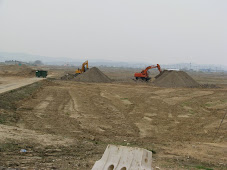


![[Collection of Documents] No Base Learning and Solidarity Program_Korea(June 14 to 20, 2010)](http://1.bp.blogspot.com/_gnM5QlRx-4c/TCTvVuN8NeI/AAAAAAAAEek/8vBJVaHdk10/S227/No-Base-banner.jpg)
![Site Fwd:[John Hines] A U.S. Debate coach’s research trip on the Issues of Korea](http://3.bp.blogspot.com/_gnM5QlRx-4c/TINCO36mzzI/AAAAAAAAE_w/Rds12NcBOXM/S227/Jeju-Peace-Tour.jpg)


![[News Update] Struggle Against the Jeju Naval Base since Jan. 18, 2010](http://1.bp.blogspot.com/_gnM5QlRx-4c/S1vvWaP25uI/AAAAAAAACkg/QvpW1tgOlKM/S226/scrum1.jpg)


![[Urgent] Please spread the Letter!: There was no Explosion! There was no Torpedo! (May 26, 2010)](http://4.bp.blogspot.com/_gnM5QlRx-4c/S_9JmsKEU7I/AAAAAAAAEP8/sAWjSPqxzUI/S227/grounded.jpg)
![Text Fwd: [Stephen Gowans]The sinking of the Cheonan: Another Gulf of Tonkin incident](http://1.bp.blogspot.com/_gnM5QlRx-4c/TAL_FtYKQ-I/AAAAAAAAERE/NEEMijiEcRM/S227/lee-myung-bak.jpg)
![[Japan Focus]Politics in Command: The "International" Investigation into the Sinking of the Cheonan](http://1.bp.blogspot.com/_gnM5QlRx-4c/TBMJ2syJzyI/AAAAAAAAEZU/uTYZccU5vyk/S227/wen_jiabao_and_lee_myungbak.png)
![[Japan Focus] Who Sank the SK Warship Cheonan? A New Stage in the US-Korean War and US-China](http://2.bp.blogspot.com/_gnM5QlRx-4c/S_iQ2vE5ZpI/AAAAAAAAEOU/Oo1SPcAe8FE/S227/buoy_map.gif)
![[Updated on 12/13/10] [Translation Project] Overseas Proofs on the Damages by the Military Bases](http://4.bp.blogspot.com/_gnM5QlRx-4c/S-qSj59gPLI/AAAAAAAAEGM/mwjlFtPE-jo/S227/missile.jpg)
![[International Petition] Close the Bases in Okinawa](http://3.bp.blogspot.com/_gnM5QlRx-4c/S8-z3DYNwNI/AAAAAAAADo4/OswTSchK09M/S227/2.jpg)

![[In Update]Blog Collection: No Korean Troops in Afghanistan](http://4.bp.blogspot.com/_gnM5QlRx-4c/SwnlLD9IewI/AAAAAAAAB9E/oUPssnpNidA/S226/No-Troops-to--Afghanistan.jpg)
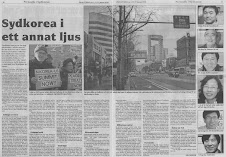

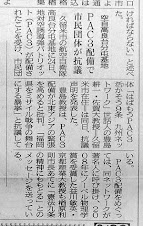

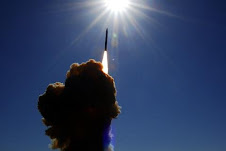






No comments:
Post a Comment